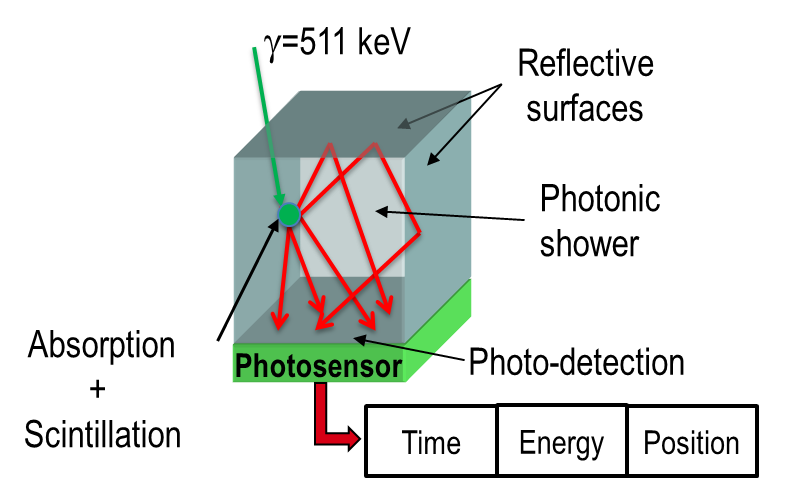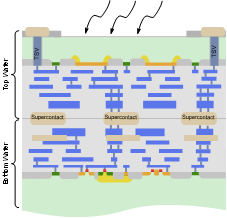PET is a non-invasive nuclear imaging technique which detects pairs of gamma rays emitted by a positron-emitting radionuclide which is a tracer introduced in the body on a biologically active molecule, usually by intravenous injection. The sensors use the radioactive decay characteristics of the tracer in order to localize the affected tissue. After the tracer is absorbed in the body, it emits a positron that travels a short distance into the body until it interacts with an electron producing gamma photons through annihilation. These photons have a similar energy profile (high-energy photons of 511keV) and geometric characteristics which offer information regarding the site of the affected tissue in the body. The photons travel approximately back-to-back, in opposite direction, along a straight line, and they can be detected outside the body by the photodetectors. The photodetectors are coupled to scintillators which convert the high-energy photons into visible photons (Fig. 1). Nowadays, a lot of interest has been dedicated to silicon-based photodetectors, especially SiPMs as a replacement of PMTs (photo multiplier tubes). SiPMs are arrays of silicon-photon avalanche diodes which operate in Geiger mode (above the breakdown voltage) and are preferred with respect to PMTs for this application because of their insensitivity to magnetic fields, compactness, high gain and lower operation voltage. Both digital and analog flavours exist for SiPMs. The digital version can also support multichannel implementation and, in addition, are more versatile because of their timing performance and the capability of directly processing the output on-chip, thus reducing the usage of external components.
The aim of this project is to develop a fully digital SPAD-based sensor for TOF-PET, targeting a time resolution of 10ps and a DCR better than 50kcps/mm2. Moreover, the technology advancements, and the introduction of new integration techniques, such as 3D (Fig. 3), have opened new frontiers in sensor development which are going to be exploited in this project.

Photosensor coupled to scintillator

Digital SiPM

3D integrated SPAD-based sensor (SPADs on top tier, electronics on bottom tier)
Applications
- Medical imaging
- Radiation and Particle Detection
- High energy physics
- Fast light detection devices
External link
This project is funded by the Swiss National Foundation (SNF) under grant 200021_169465